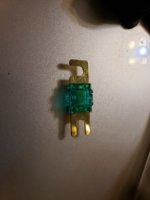The following is a brief writeup of how to install a Bussmann auxiliary relay and fuse panel into a Jeep or any other vehicle.

If there is any interest in this topic, please respond and I would be happy to go into more detail on how these boxes work or how to install them.
Ask any questions. I am attempting to keep this shorter, so I am purposely skipping some explanations, part numbers, links, etc.
This writeup assumes the person performing work is competent with electronics, and understands principles and rules behind electrical circuits.
Any electrical work is done at your own risk. Consult an automotive electrical professional.
The purpose of the Bussmann install is to provide a single location to hook up any and all auxiliary circuits 30 amps or smaller to the electrical system. The Bussmann panels provide a location to install both fuses and relays. Some configurations also include internal bussing, making wiring of the system far easier. Using a Bussman fuse and relay panel significantly cleans up the wiring in your Jeep. No more bird's nests of relays, fuses, and wires going everywhere. Plus it makes troubleshooting, connecting, and disconnecting electrical accessories far simpler.
If there is any interest in this topic, please respond and I would be happy to go into more detail on how these boxes work or how to install them.
Ask any questions. I am attempting to keep this shorter, so I am purposely skipping some explanations, part numbers, links, etc.
This writeup assumes the person performing work is competent with electronics, and understands principles and rules behind electrical circuits.
Any electrical work is done at your own risk. Consult an automotive electrical professional.
The purpose of the Bussmann install is to provide a single location to hook up any and all auxiliary circuits 30 amps or smaller to the electrical system. The Bussmann panels provide a location to install both fuses and relays. Some configurations also include internal bussing, making wiring of the system far easier. Using a Bussman fuse and relay panel significantly cleans up the wiring in your Jeep. No more bird's nests of relays, fuses, and wires going everywhere. Plus it makes troubleshooting, connecting, and disconnecting electrical accessories far simpler.


